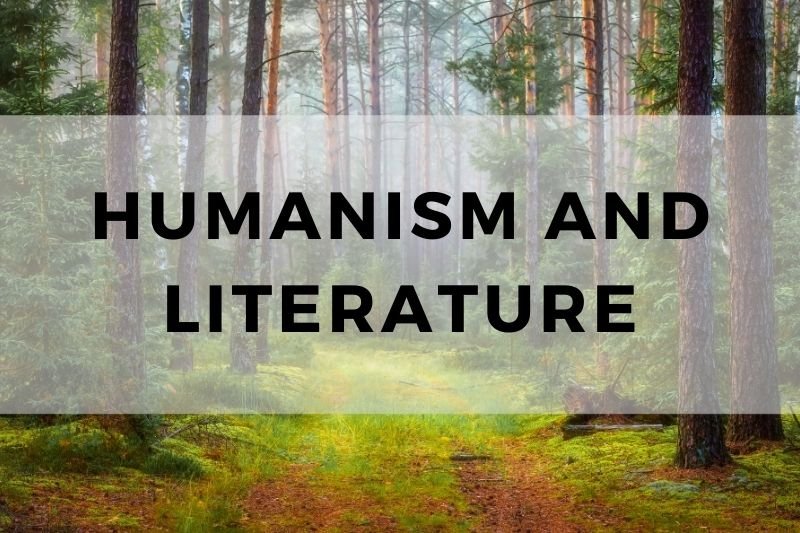
Humanism has shaped literature and the arts for centuries. It emphasizes the value of human beings, individual expression, and reason. Emerging during the Renaissance, humanism revived classical ideals, pushing artists and writers to focus on human experience. It influenced works across various periods, from the Enlightenment to Modernism.
This philosophy laid the foundation for many creative movements, driving the exploration of human potential. In this article, we will explore humanism’s profound influence on literature and the arts, and how it continues to resonate today.
Defining Humanism
Humanism is a philosophy that places human beings at the center. It values reason, individualism, and human potential. Unlike medieval thought, which focused on divine intervention, humanism emphasizes the capacity for humans to shape their own destiny. It encourages the pursuit of knowledge, personal growth, and the exploration of human emotions. Rooted in classical antiquity, humanism rejects dogma and looks to the past for inspiration, while also encouraging innovation. At its core, humanism is about the empowerment of the individual and the belief that people can make meaningful contributions to society and culture.
Historical Overview of Humanism in Literature and Arts
#1. Renaissance Revival of Classical Antiquity (14th–17th Century)
The Renaissance marked the rebirth of classical ideals. Humanism led to a renewed interest in Greek and Roman art, philosophy, and literature. Artists and writers looked back to ancient texts for inspiration. Figures like Leonardo da Vinci and Michelangelo embodied humanist ideals through their focus on human anatomy and individual expression. This revival shifted attention away from religious themes to the beauty and potential of human life.
#2. Enlightenment Emphasis on Reason and Individualism (17th–18th Century)
During the Enlightenment, humanism took a more intellectual form. Writers and philosophers emphasized reason, science, and individual rights. Thinkers like Voltaire and Rousseau championed the importance of human liberty and rational thought. Their works encouraged the questioning of authority and traditional beliefs, shaping modern democratic ideals. Humanism in this period focused on improving society through reason and personal freedoms.
#3. Romanticism’s Celebration of Human Emotion and Imagination (Late 18th–Early 19th Century)
In the Romantic era, humanism shifted to embrace emotion, imagination, and nature. Writers like William Wordsworth and Mary Shelley explored deep emotional connections to the natural world. This period rejected the rationalism of the Enlightenment, instead celebrating human passion and creativity. Romanticism gave a voice to the individual experience, valuing intuition and personal feelings as sources of artistic inspiration.
#4. Realism and the Focus on Everyday Human Experiences (Mid–Late 19th Century)
Realism emerged as a response to Romanticism, focusing on the everyday lives of ordinary people. Writers like Charles Dickens and Gustave Flaubert portrayed society’s issues with raw honesty. Realism in literature and art sought to represent the world as it truly was, without idealization. Humanism in this period emphasized the importance of portraying real human experiences, flaws, and struggles.
#5. Modernism and the Exploration of Human Subjectivity and Identity (Late 19th–Early 20th Century)
Modernism, which began in the late 19th century, explored the complexities of human consciousness and identity. Writers such as James Joyce and Virginia Woolf focused on individual perception and inner thoughts. Modernist art and literature broke traditional forms, experimenting with new styles and structures. Humanism in this era questioned the nature of reality and the role of the individual in a rapidly changing world.
How Humanism Influenced Literature and Arts
#1. Emphasis on Individual Expression
Humanism encouraged the expression of individual thoughts, emotions, and personal experiences. Artists and writers began to move away from religious and collective themes, focusing instead on the individual. This shift led to a greater diversity of voices and perspectives in literature and art. For example, Shakespeare’s works explored the inner struggles and complexities of individual characters, offering a deep dive into personal identity and emotions. This focus on individual expression became a hallmark of humanist influence in literature and the arts.
#2. Revival of Classical Themes
Humanism revived classical themes from ancient Greek and Roman literature, leading to a renewed interest in human virtues, morality, and the natural world. Writers and artists of the Renaissance, such as Petrarch, looked to the works of ancient philosophers and poets for guidance and inspiration. These classical themes of heroism, rational thought, and human dignity became central to Renaissance literature and art. For example, Raphael’s frescoes, inspired by classical ideals, portrayed human figures in a realistic and dignified manner, reflecting the humanist focus on human beauty and potential.
#3. Focus on Secular Subjects
One of the major shifts brought by humanism was the focus on secular, or non-religious, subjects in art and literature. Artists and writers moved away from the religious themes that dominated medieval culture, instead exploring the human experience in all its complexity. Renaissance artists like Leonardo da Vinci and Michelangelo created works that celebrated human beauty and achievement, such as the Vitruvian Man and David. Similarly, writers like Dante Alighieri in The Divine Comedy explored human nature, emotions, and philosophy without relying solely on religious doctrine, reflecting a broader, secular approach to storytelling.
#4. Realism in Art
The humanist influence in art brought a focus on realism, where artists sought to depict people and scenes as they truly were, without idealization. This shift away from stylized or symbolic depictions allowed for a more accurate and honest representation of the human experience. Artists like Rembrandt and Courbet embraced this approach, portraying everyday scenes, human emotions, and the struggles of ordinary people. Courbet’s The Stone Breakers is a prime example of this, showing working-class individuals in a stark, unromanticized light. The realism seen in this art reflected humanism’s celebration of the human condition.
#5. Development of Portraiture
With humanism came the development of portraiture as a dominant art form. The emphasis on individualism and the value of personal identity led to a surge in the creation of portraits, which celebrated human likeness, character, and status. Renaissance artists like Hans Holbein and Titian captured the personalities and physical features of their subjects with great attention to detail. These portraits weren’t just about appearance; they were a reflection of the individual’s personal achievements, emotions, and place in society. Portraiture became a way for people to assert their identity and place in history.
#6. Exploration of Human Potential
Humanism encouraged the exploration of human potential, focusing on what individuals could achieve. Writers and artists began to explore human capacity for greatness, intellect, and creativity. This is evident in the works of Renaissance figures like Michelangelo, whose sculptures and paintings, such as The Creation of Adam, show the human form in its most idealized and powerful state. Similarly, in literature, works like Thomas More’s Utopia explore the idea of human society achieving its greatest potential through reason and cooperation. Humanism emphasized that individuals were capable of profound achievement in all fields, including art, literature, and philosophy.
#7. Birth of New Literary Forms
Humanism spurred the creation of new literary forms. As writers began to focus more on the individual and the human experience, new styles of writing emerged. The essay, for example, became a popular form of writing during the Renaissance, with authors like Michel de Montaigne using it to explore personal reflections on life, morality, and society. In addition, the humanist emphasis on education and learning contributed to the rise of scientific and philosophical writing. Humanist ideas reshaped traditional literary forms, encouraging new genres that placed value on human thought, creativity, and expression.
#8. Influence on Renaissance Literature
Renaissance literature was deeply influenced by humanist thought. Writers of the period, such as Petrarch and Erasmus, focused on themes of human dignity, individual potential, and classical learning. Petrarch’s sonnets, for example, celebrated human emotion and the beauty of individual experience. Erasmus, in his In Praise of Folly, used satire to critique society while also promoting the humanist ideals of reason and self-improvement. Humanism revived classical Greek and Roman texts, influencing writers to adopt a style that reflected intellectual rigor and a focus on human nature, laying the foundation for much of modern Western literature.
#9. Patronage and Artistic Freedom
Humanism also influenced the structure of art production through patronage. Wealthy individuals, including merchants, nobles, and the church, sponsored artists, providing them with the resources to create works that reflected humanist values. This patronage system allowed artists to focus on their craft, exploring new techniques and subjects. The Medici family, for example, supported Renaissance artists like Botticelli and Leonardo da Vinci, encouraging the creation of works that celebrated human achievement and beauty. This system also provided greater artistic freedom, as artists were no longer limited to religious commissions but were able to explore secular themes and individual expression.
#10. Exploration of Morality and Ethics
Humanism brought a renewed focus on morality and ethics, shifting the conversation from religious dogma to human-centered reasoning. Humanists explored questions of what it means to live a virtuous life and how individuals can contribute to society. In literature, this is seen in works like Shakespeare’s Hamlet, which grapples with questions of morality, justice, and personal responsibility. Philosophers like Erasmus and Thomas More also addressed ethical issues in their writings, often questioning the role of religion and promoting a more rational approach to morality. Humanism shifted the focus from divine commandments to human capacity for reasoned ethical decision-making.
Closing Thoughts
Humanism has had a lasting influence on literature and the arts, shaping the way we understand and express human experience. From the Renaissance to Modernism, it encouraged a focus on individuality, reason, and the potential of human achievement.
Through its exploration of secular themes, emphasis on realism, and encouragement of new literary forms, humanism left an indelible mark on creative expression. As we look to the future, the values of humanism continue to inspire artists and writers to explore the complexities of the human condition, making its legacy as relevant today as it was centuries ago.
